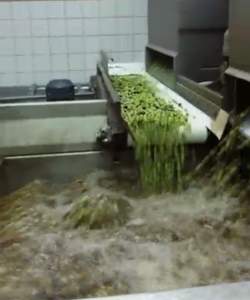From the Olive Harvest to Fresh Olive Oil
- sophiefodil
- Dec 1, 2015
- 3 min read
This year, I could start harvesting my olives in November, as the weather conditions were particularly favourable.

I started with the olive groves I have near Kalamaki.
The groves are on a slope and the olive trees fully benefit from the surrounding influences of the sea and the mountain.
Every other year, we have a very good harvest, and then the following year, we don't get so many olives as the trees need to recover.
This year should be a relatively low year, as we had a strong harvest last year. Still, when I checked my trees, there were plenty of olives so although the yield won't be as strong as last year, it won't be bad.
Also, the quality of the olives is very good. They are very healthy-looking, with a good size, colour and shine. It is now a perfect time to start harvesting them as they have reached the right level of maturity.
The team I work with placed the olive nets around the trees, and started to work, using electric handheld harvesters.
In one day, a team of 6 can harvest about 2 tons of mixed olives and leaves, gathered into the nets.

These are then transferred into jute sacks which are perfect to keep the olives for a short time whilst letting them "breathe" so their freshness is not compromised.
So the average yield in a day is about 40 sacks of olives, each weighing about 50kg, but still mixed with some leaves.
We load the olive sacks onto my van when we have gathered enough so I can take them to the press as soon as possible. The quicker the olives are pressed after having been harvested, the better the oil.
I therefore sometimes drive to the press several times in the day during the harvesting season.
Pressing the olives
First of all, the olives are thoroughly washed in several baths, a process during which the leaves are discarded, as well as any impurities.
The washed olives are then malaxed at length, and crushed by strong metallic blades.
The process is fully automated, with conveyor belts slowly taking the olives along a line where each step is mechanically performed by various machines. All operations are carried out at low or room temperatures and no chemicals or additives are used, therefore guaranteeing the integrity of the olives and making it possible to produce a high quality olive oil which can qualify as "extra virgin".
After the olives are pressed, the juice which is collected must be left to rest for a couple of weeks before it is ready to be filtered and collected as fresh olive oil.

Nothing is mixed to the olives, no additives or solvents are added. The olive oil obtained that way is the pure produce of the fruit.
During the busy harvesting season, the press can work 24 hours a day for many days.

It takes between 4kg and 5.5kg of olives to obtain 1 litre of olive oil. The yield depends on the types of olives, but also on the area the olive groves are located in. Olive trees in the mountains tend to produce more than those closer to the sea.

You can see all the stages of my November olive harvest in the following short video, which includes the above beautiful product shot our friends Susanne and Niels from Denmark took (a BIG THANK YOU to them!), as well as footage from the press.
Click on the picture to start the video.




































































Το Infinity Casino είναι ο ιδανικός προορισμός για τους λάτρεις των online καζίνο, προσφέροντας φρουτάκια, επιτραπέζια παιχνίδια και live καζίνο. Με γενναιόδωρα μπόνους, προσφορές και προγράμματα VIP, η εμπειρία παιχνιδιού γίνεται ακόμη πιο συναρπαστική. Η πλατφόρμα ξεχωρίζει για την ασφάλεια, τις γρήγορες πληρωμές και την εξυπηρέτηση πελατών 24/7. Επιπλέον, είναι συμβατό με υπολογιστές και κινητές συσκευές, προσφέροντας απόλυτη ευκολία. Αν ψάχνετε για αξιόπιστο και διασκεδαστικό online καζίνο, το infinity casino είναι η καλύτερη επιλογή!